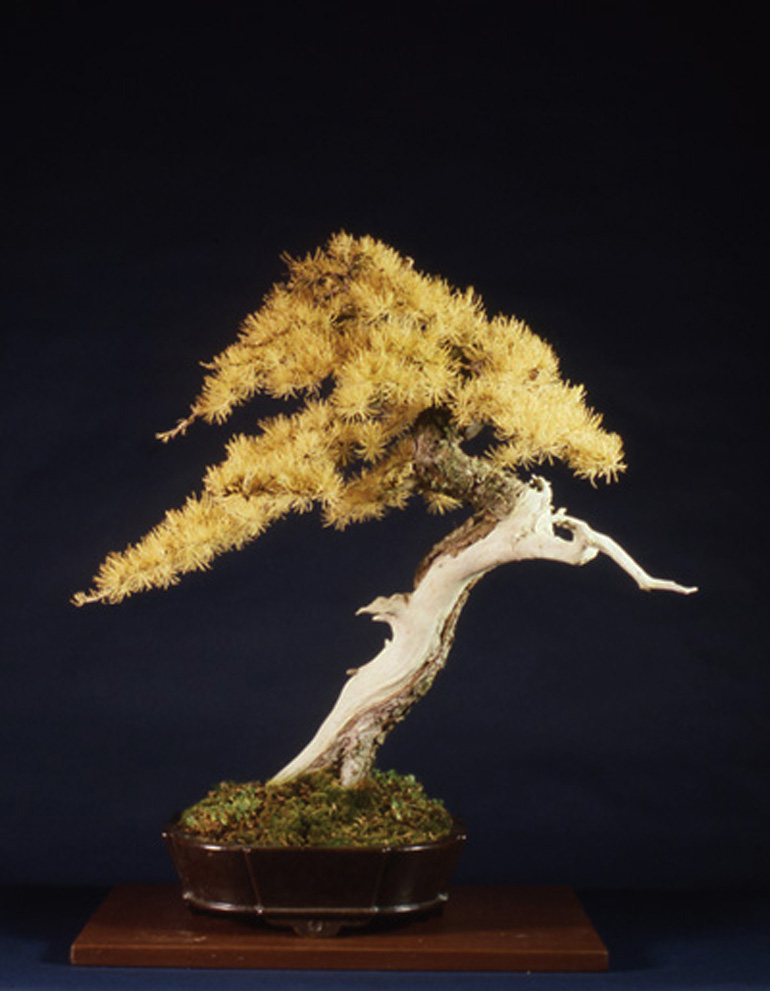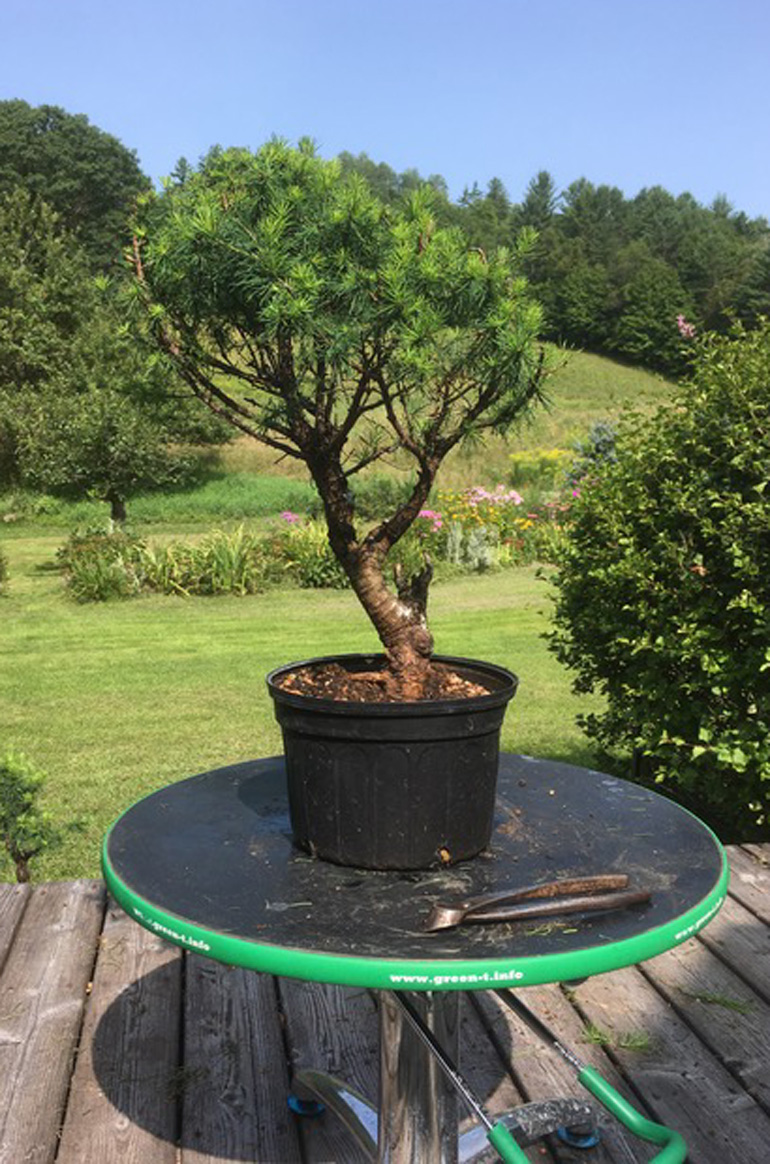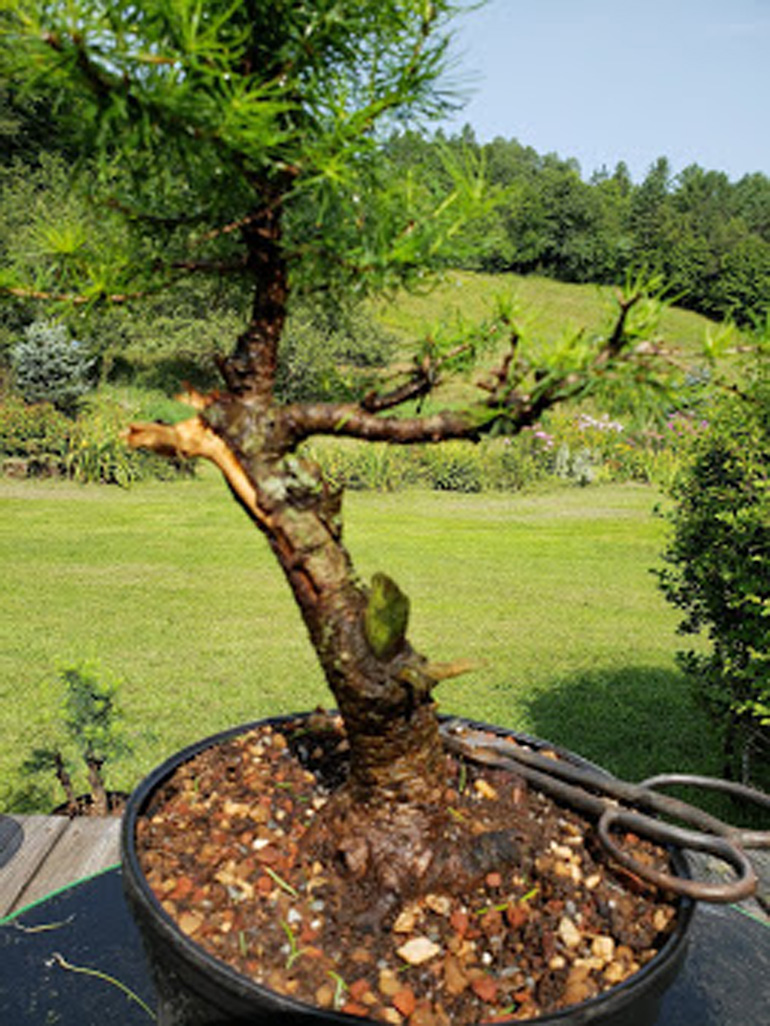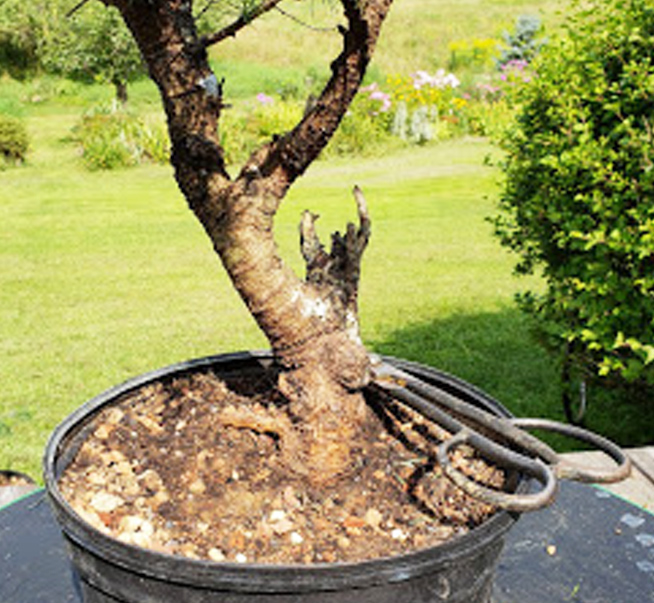
A famous American larch (Aka Tamarack - Larix laricina) in full fall color (larch are one of a small handful of deciduous conifer in the world). The artist is 'Larch Master' Nick Lenz. It's a massive tree. Much bigger than you might think based on this photo
We (Stone Lantern) are bringing about 30 field grown larches to the 6th U.S. National Bonsai Exhibition (September 8th & 9th in Rochester, NY – the one bonsai event not to miss!)
Almost all of our larches are 15 to 20 years old and most are in nursery pots and have had minimal training. Perfect for the do-it-yourself crowd. We’ll also have a few small Shimpaku junipers and two or three Ficus. And of course our famous Roshi Bonsai tools, plenty of bonsai wire at the lowest prices anywhere and lots of other essential bonsai items
We’ve got a few mediocre cell photos below (better than nothing) and some text on larch care that you might find helpful.
Larch care for the American larch (Larix laricina)
Location. Larches do best in full sun, though you can grow them in light shade. Heavy shade doesn’t work that well and indoors is taboo
Continued below…

Here's one on a Green T turntable that we're bringing. We'll bring the turntable too. And remember, these were shot on my cell by a rank amateur
Larch care continued from above
Winter care. Don’t forget, larches are one of a handful of deciduous conifers, so don’t panic when the needles turn yellow and start falling off (in the fall of course). Larches are extremely cold hardy and require an extended period of freezing temperatures each winter. If healthy, you can keep yours outside in a place that is sheltered from the wind down to single digits Fahrenheit (5F is -15 celsius). More protection is good idea in very cold climates. A cold frame or unheated building is recommended though a good blanket of snow can work. During winter thaws, check to the soil to make sure it isn’t bonsai dry
Watering. In nature larch grow in moist areas, though when in pots, a soil that drains well is best. It is good to allow your larch to dry down between waterings (this helps avoid root rot and encourages root growth) but beware!… though larches are fairly drought tolerant in the wild, it’s a different story in pots. Be careful not allow the soil to become bone dry and stay that way, especially in the hot sun
Continued below…

Here's another one on our Green T
Continued from above…
Fertilizing. During the growing season we feed our larches regularly. We prefer mild well-balanced fertilizers like Green Dream and Dyna-gro Bonsai Pro. In the late summer we continue feeding with Green Dream and gradually taper off until mid to late fall. These late feedings help strengthen the roots for the coming winter and can also help thicken the trunk and lower branches
Pest and diseases. Larch tend to be fairly pest and disease resistant, though like most plants they have their vulnerabilities. Rather than go into detail here, we suggest you do an online search for specifics. Here’s a good place to start
Continue below…

Here's another one (you can sort of see some others others we are bringing). Apologies for the fuzz
Continued from above…
Repotting. When conditions are right, larch roots can grow quite rapidly, so fairly frequent repotting is a good idea. Here in northern Vermont where the growing season is short, every second or third year works. Larch aren’t crazy about root disturbance, so we don’t suggest bare-rooting or extreme root pruning
Pruning. Healthy larches grow rapidly in the spring and summer so fairly frequent pruning is necessary. Pruning any bonsai properly for health and beauty is large subject, so we won’t go into detail here. There are online forums etc where you can pick up valuable information on larch pruning, wiring, propagation and more. You might start with Harry Harrington’s bonsai4me
We’ve tried to hit the essentials you’ll need to get started. There is of course, more you’ll need to learn to be successful with larch or any bonsai

Close up. Notice the nebari. A sure sign of age. The shears are Okatsune Bonsai Shears. My favorite

Another close up. Rugged bark is another sign of age. Same Okatsune bonsai shears

One more. Same shears